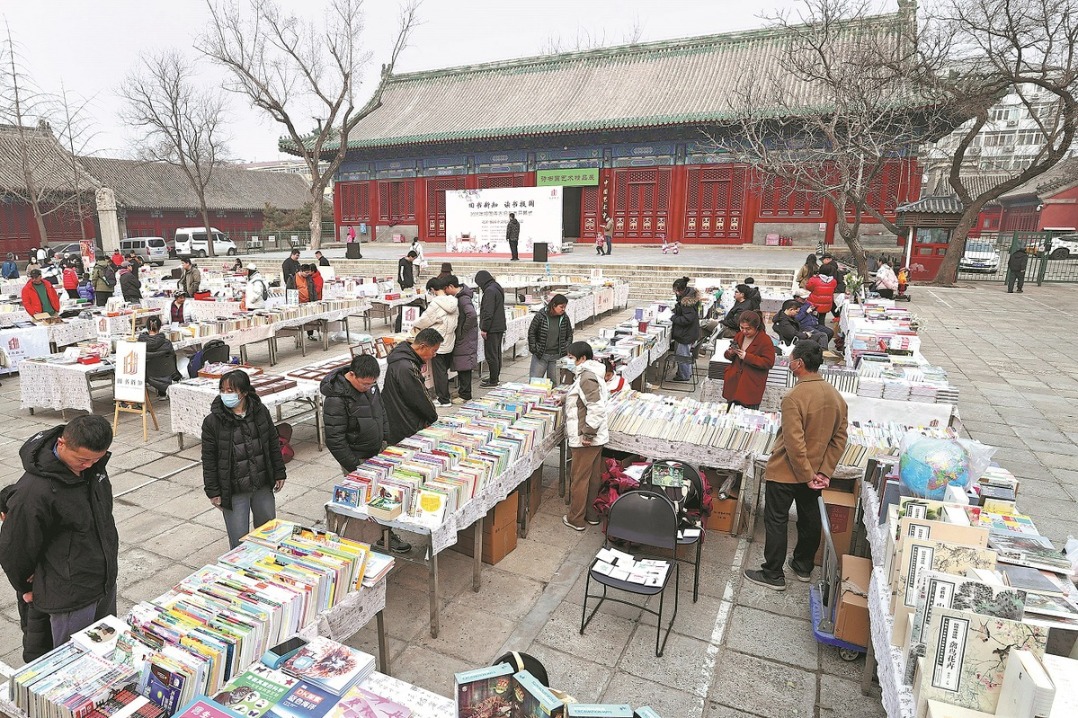Study reveals how plants identify 'beneficial friend'

Scientists in Shanghai have unraveled how plants distinguish between beneficial and harmful microbes in soil at the molecular level, a discovery that could significantly impact green agriculture and global food security.
Plants host a variety of microorganisms in their root systems. While symbiotic fungi establish mutually beneficial relationships with plants and aid in absorbing essential nutrients from the soil, pathogens deplete these nutrients, leading to reduced crop yields and plant death.
By understanding how plants differentiate between "friend" and "foe", researchers aim to develop crop cultivation methods that reduce the need for environmentally harmful fertilizers, maintain yields and enhance resilience.
Researchers at the Chinese Academy of Sciences' Center for Excellence in Molecular Plant Sciences in Shanghai identified LysM receptor kinases on plant cell membranes as key in detecting molecular signals from microbes. These signals trigger either symbiotic or immune responses. The team's findings, published in international journals from 2015 to 2024, have shed light on this complex mechanism.
However, the abundance of LysM receptor kinases in flowering plants and their overlapping functions complicate the understanding of how plants precisely distinguish between microbes. To address this, the scientists turned to Marchantia paleacea, also known as a common spleen moss, an early land plant with a simpler genome and fewer LysM receptors, making it an ideal model for their study.
The research identified two LysM receptor kinases in common spleen moss — MpaLYR and Mpa-CERK1 — that act as sensors to distinguish between symbiotic and pathogenic microbes and activate distinct responses.
Under low-phosphorus conditions, the researchers found plants release a hormone that prompts symbiotic fungi to secrete large quantities of short-chain chitin oligomers. These molecules are recognized by MpaLYR, triggering symbiotic responses while inhibiting immune responses to long-chain chitin oligomers from pathogenic fungi.
"This process is like a teacher taking roll call in a classroom," said Wang Ertao, a lead researcher on the team. "Only symbiotic fungi respond to the hormone and release symbiotic signals, attracting them to the plant to aid in the absorption of water and nutrients like phosphorus and nitrogen."
This dynamic balance between symbiosis and immunity allows plants to adapt to diverse environments, acquire nutrients through symbiosis and maintain effective defenses against pathogens.
The findings, published Friday on the website of the journal Cell, open new possibilities for improving crop growth efficiency. Scientists can now enhance plant secretion of strigolactones (the hormone) to attract symbiotic fungi over pathogens, Wang said.
- Ma pins hopes on youth from both sides
- IP regulator enhances steps to help Chinese companies going global
- 2024 was world's warmest year on record
- New guidelines for protection and governance of rivers unveiled
- HK-based food critic, writer Chua Lam dies at 83
- Shipping sector goes greener with new energy sources





































